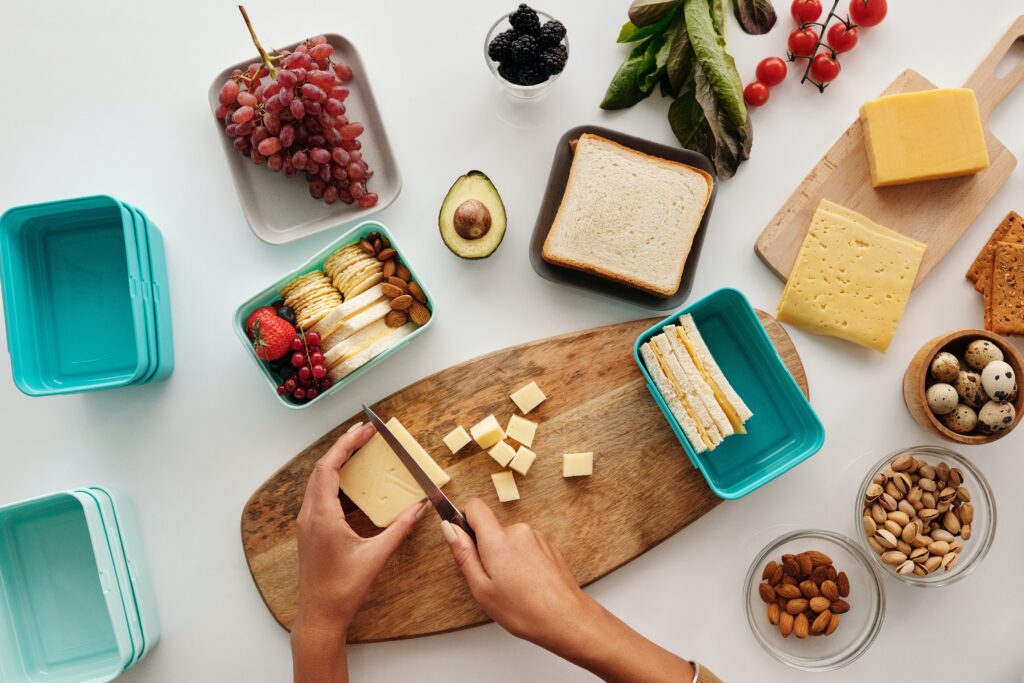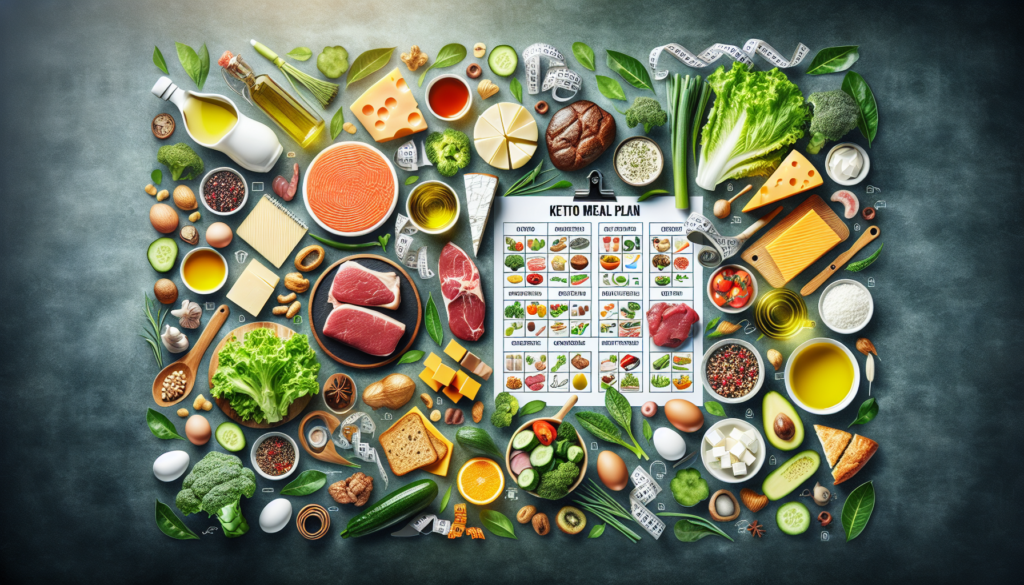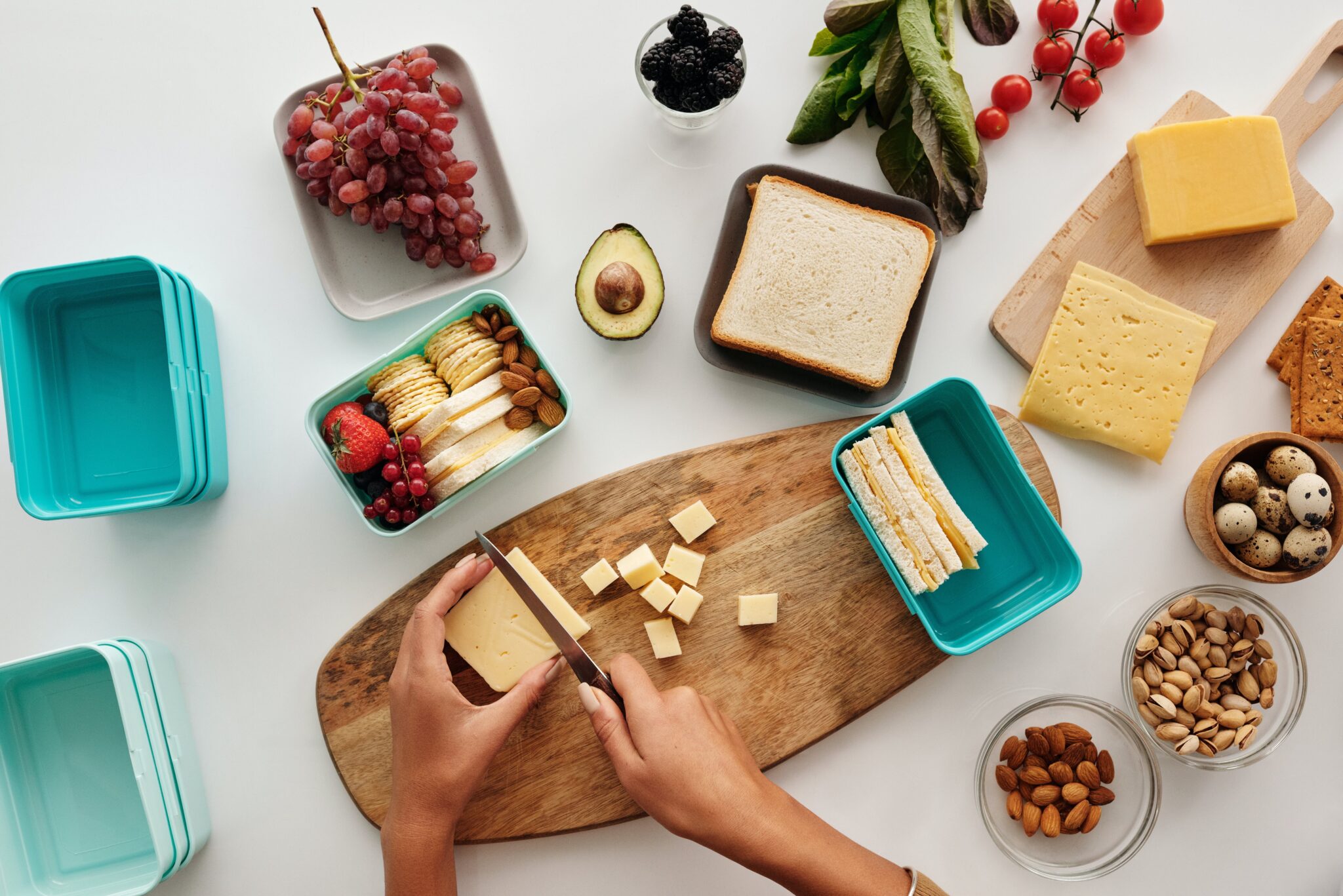If you’re curious about keto meal plans and how they work, you’ve come to the right place. In this article, we’ll explore the world of keto meal prep ideas, where you can efficiently prepare delicious and keto-friendly meals in advance, making it ideal for busy professionals who want to maintain their keto lifestyle. We’ll also delve into the realm of keto-friendly snacks, ensuring that you have a variety of tasty options to satisfy your cravings while staying on track with your nutritional goals.
Additionally, we’ll discuss the benefits of incorporating intermittent fasting into your keto routine, optimizing both strategies for improved health. Furthermore, we’ll provide insights and tips on effective meal planning within the keto framework to support your weight loss journey. And lastly, we’ll touch upon how to fuel your workouts while following a keto diet, ensuring that you have the energy needed for optimal fitness results. So, let’s dive into the world of keto meal plans and discover how they can work wonders for you.

What Are Keto Meal Plans?
Definition of keto meal plans
Keto meal plans, short for ketogenic meal plans, are a specific type of meal plan that focuses on consuming low-carbohydrate, high-fat foods. The main goal of a keto meal plan is to promote ketosis, a metabolic state where the body relies on fat for fuel instead of carbohydrates. This is achieved by significantly reducing carbohydrate intake and replacing it with healthy fats and a moderate amount of protein.
Components of a keto meal plan
A keto meal plan typically consists of foods that are rich in healthy fats, such as avocados, nuts, and seeds. It also includes moderate amounts of protein from sources like meat, poultry, fish, and eggs. The carbohydrate intake is kept to a minimum by avoiding foods high in carbs, including grains, legumes, starchy vegetables, and most fruits. Instead, low-carb vegetables like leafy greens, broccoli, and cauliflower are emphasized. Keto meal plans also encourage the consumption of natural, unprocessed foods and discourage the use of added sugars and refined carbohydrates.
Benefits of Keto Meal Plans
Weight loss
One of the main reasons people turn to keto meal plans is for weight loss. By reducing carbohydrate intake and increasing fat consumption, the body is forced to burn stored fat for energy, leading to weight loss. Additionally, the high-fat, moderate-protein meals in a keto meal plan can help promote satiety and decrease cravings, making it easier to adhere to a calorie-restricted diet.
Increased energy levels
When following a keto meal plan, the body switches from using carbohydrates as its primary fuel source to using fats. Fats are a more stable and sustainable source of energy, leading to increased energy levels throughout the day. Many individuals report feeling more energized and mentally focused once they become fat-adapted on a keto diet.
Improved mental clarity
The high-fat nature of a keto meal plan can have a significant impact on brain health. The brain is made up of mostly fat and requires a steady supply of fats to function optimally. By providing the brain with a constant source of healthy fats, a keto meal plan can enhance mental clarity, focus, and cognitive function.
Reduced inflammation
Keto meal plans have been shown to reduce inflammation in the body. By limiting the consumption of inflammatory foods, such as processed carbohydrates and sugars, and increasing the intake of anti-inflammatory foods, such as fatty fish and olive oil, a keto meal plan can help reduce chronic inflammation. This can have a positive impact on various health conditions, including arthritis and autoimmune disorders.
Stabilized blood sugar levels
For individuals with diabetes or insulin resistance, stabilizing blood sugar levels is crucial. A keto meal plan can help achieve this by significantly reducing carbohydrate intake, which leads to a decrease in blood sugar spikes. By relying on fats and proteins for energy, rather than carbohydrates, individuals on a keto meal plan can maintain more stable blood sugar levels throughout the day.


How Do Keto Meal Plans Work?
Inducing ketosis
The primary mechanism behind the effectiveness of keto meal plans is the induction of ketosis. Ketosis is a metabolic state where the body produces ketones from stored fats to be used as energy instead of glucose from carbohydrates. By limiting carbohydrate intake to around 20-50 grams per day, the body is forced to enter ketosis and rely on fats for fuel.
Macronutrient ratios
Another key aspect of keto meal plans is the specific macronutrient ratio. A typical keto meal plan consists of consuming approximately 75% of calories from fat, 20% from protein, and 5% from carbohydrates. This distribution ensures that the body remains in a ketogenic state and continues to utilize fats for energy.
Food choices and restrictions
Keto meal plans emphasize the consumption of whole, unprocessed foods that are low in carbohydrates and high in healthy fats. Foods like meat, poultry, fish, eggs, non-starchy vegetables, avocados, nuts, and seeds are staples of a keto meal plan. On the other hand, high-carbohydrate foods such as grains, legumes, most fruits, and sugary foods are restricted or limited.
Meal timing and frequency
Keto meal plans do not typically impose strict guidelines on meal timing or frequency. Some individuals may prefer to practice intermittent fasting, where they restrict their eating window to a certain number of hours each day. Others may prefer to eat smaller, more frequent meals throughout the day. Ultimately, it is important to find what works best for each individual’s lifestyle and preferences.
Tracking and monitoring
To ensure that the macronutrient ratios are being followed and to track progress, many individuals on a keto meal plan find it helpful to track their food intake using apps or tools. These tools can provide guidance on the number of carbohydrates, fats, and proteins in various foods and can help individuals stay on track with their dietary goals.
Designing a Keto Meal Plan
Determining caloric and macronutrient needs
Before designing a keto meal plan, it is important to determine individual caloric and macronutrient needs. Factors such as age, gender, activity level, and weight goals should be taken into consideration. There are online calculators and resources available that can help estimate these needs and guide the design of a personalized keto meal plan.
Planning meals and recipes
Once the caloric and macronutrient needs have been determined, the next step is to plan meals and recipes that align with a keto meal plan. This involves selecting a variety of foods that fall within the appropriate macronutrient ratios and incorporating them into balanced, satisfying meals. It is important to prioritize nutrient-dense foods and include a balance of proteins, healthy fats, and non-starchy vegetables in each meal.
Grocery shopping
After meal planning, it is time to make a grocery list and go shopping. When following a keto meal plan, it is important to stock up on foods that are low in carbohydrates and high in healthy fats and proteins. This may include items such as avocados, coconut oil, nuts and seeds, grass-fed meats, and fatty fish. It is also important to read food labels and avoid products that contain added sugars or unhealthy fats.
Meal prep and batch cooking
To make sticking to a keto meal plan easier, it can be beneficial to prepare meals in advance through meal prep and batch cooking. This involves cooking and portioning out meals and snacks for the week ahead, so they are readily available when needed. Having pre-prepared meals on hand can save time and ensure that nutritious, keto-friendly options are always available.

Keto Meal Plan Ideas
Breakfast options
For breakfast on a keto meal plan, options can include eggs cooked in various ways (such as omelets, scrambled, or boiled), avocado toast made with low-carb bread or lettuce wraps, chia seed puddings made with unsweetened almond milk, or Greek yogurt topped with berries and a sprinkle of nuts.
Lunch and dinner recipes
Lunch and dinner options on a keto meal plan can include grilled chicken or salmon paired with a side of roasted non-starchy vegetables, zucchini noodles with a creamy Alfredo sauce, cauliflower rice stir-fry with shrimp or tofu, or a hearty salad with mixed greens, avocado, bacon, and a dressing made with olive oil and vinegar.
Snack ideas
For snacks on a keto meal plan, options can include a handful of mixed nuts, celery sticks with almond butter, hard-boiled eggs, sliced cucumber with cream cheese, sugar-free beef jerky, or a keto-friendly protein shake.
Dessert recipes
Indulging in desserts while following a keto meal plan is still possible. Some keto-friendly dessert ideas include chocolate avocado mousse, coconut flour pancakes topped with sugar-free syrup, almond flour cookies, or a bowl of mixed berries with a dollop of whipped cream.
Adjusting Keto Meal Plans for Different Goals
Weight loss
To optimize weight loss while on a keto meal plan, it may be necessary to create a calorie deficit by further reducing overall calorie intake. This can be achieved by adjusting portion sizes or incorporating intermittent fasting into the meal plan. It is also important to focus on nutrient-dense, whole foods and avoid excessive snacking or overconsumption of high-fat foods.
Muscle gain
For individuals looking to build muscle while following a keto meal plan, it is important to increase protein intake to support muscle growth and repair. This can be done by adding additional protein sources to meals, such as lean meats, Greek yogurt, or protein powder. It is also beneficial to incorporate strength training exercises into a fitness routine to stimulate muscle growth.
Athletic performance
Athletes or individuals who engage in regular intense physical activity may need to adjust their keto meal plan to ensure they have sufficient energy for their workouts. This may involve slightly increasing carbohydrate intake or strategically timing carbohydrate consumption around workouts to provide the necessary energy. It is important to experiment and find the right balance that supports performance while still maintaining a state of ketosis.
Maintenance
Once weight loss or other specific goals have been achieved, adjusting a keto meal plan for maintenance involves finding a sustainable balance of calorie intake, macronutrient ratios, and food choices. It is important to continue following a balanced and varied diet that supports overall health and well-being while still keeping carbohydrate intake low enough to maintain ketosis.

Common Challenges with Keto Meal Plans
Keto flu
When transitioning to a keto meal plan, some individuals may experience what is known as “keto flu.” This can include symptoms such as fatigue, headaches, nausea, and irritability. This is typically a temporary phase as the body adapts to using fats for fuel instead of carbohydrates. Staying hydrated, replenishing electrolytes, and gradually reducing carbohydrate intake can help mitigate these symptoms.
Social situations and dining out
One of the challenges of following a keto meal plan is navigating social situations and dining out. Many restaurants and social gatherings offer foods that are high in carbohydrates and may not align with a keto diet. Planning ahead, researching menu options, and advocating for keto-friendly alternatives can help individuals stick to their meal plan in these situations. It is also important to communicate with friends and family about dietary restrictions and preferences to ensure support and understanding.
Food cravings
Cravings for high-carbohydrate foods can be a common challenge when following a keto meal plan. This is often due to the body’s previous reliance on carbohydrates for energy. To combat cravings, it can be helpful to have keto-friendly alternatives on hand, such as low-carb snacks or satisfying fat-rich foods. It is also important to address any underlying emotional or psychological factors that may contribute to cravings and find healthy coping strategies.
Plateauing
Another challenge individuals may face on a keto meal plan is reaching a weight loss plateau or experiencing a stall in progress. This can be frustrating but is a normal part of any weight loss journey. To overcome a plateau, individuals can try adjusting their calorie intake, incorporating intermittent fasting, increasing physical activity, or reassessing portion sizes. It is important to be patient and remember that weight loss is not always linear.
Tips for Success with Keto Meal Plans
Stay hydrated
Proper hydration is important when following a keto meal plan. As the body transitions into ketosis, it excretes more water and electrolytes, which can lead to dehydration. It is important to drink plenty of water throughout the day and consider adding electrolyte-rich foods or supplements, such as bone broth or electrolyte powders, to maintain balance.
Include a variety of foods
To ensure a well-rounded and nutrient-dense keto meal plan, it is important to include a variety of foods from different food groups. This can help provide a wide array of essential vitamins, minerals, and other beneficial nutrients. Incorporate different types of protein, healthy fats, and non-starchy vegetables to promote optimal health and prevent nutrient deficiencies.
Listen to your body
Each individual’s response to a keto meal plan may vary. It is important to listen to your body and adjust the meal plan accordingly. If certain foods or macronutrient ratios do not work well for you, consider making modifications. Pay attention to your energy levels, mood, digestion, and overall well-being to ensure that the meal plan is meeting your specific needs.
Find keto-friendly alternatives
When following a keto meal plan, it is helpful to find alternatives to high-carbohydrate foods that align with the diet. There are many keto-friendly options available on the market today, such as low-carb bread, cauliflower rice, and zucchini noodles. Experiment with different swaps and substitutions to recreate your favorite dishes in a way that fits within the keto framework.
Seek support and accountability
Embarking on a keto meal plan can be challenging, especially in the beginning. It can be helpful to seek support and accountability from friends, family, or online communities who are also following a keto lifestyle. Sharing experiences, recipes, and tips can provide motivation, inspiration, and a sense of camaraderie on the journey.

Combining Keto Meal Plans with Other Strategies
Intermittent fasting
Intermittent fasting is a strategy that involves alternating periods of fasting with periods of eating. When combined with a keto meal plan, intermittent fasting can enhance the benefits of both approaches. This can include practicing a daily fasting window, such as the 16:8 method, or incorporating longer fasting periods a few times a week. This can help optimize fat burning and ketone production while providing additional metabolic and health benefits.
Exercise and physical activity
Regular exercise is an important component of a healthy lifestyle, and it can be successfully incorporated into a keto meal plan. While the body may require an adjustment period to adapt to exercising in a state of ketosis, many individuals find that they have sustained energy levels and improved endurance once they become fat-adapted. It is important to listen to your body, fuel appropriately before and after workouts, and tailor exercise intensity and duration to your fitness level.
Supplement use
Depending on individual needs and goals, certain supplements may be beneficial when following a keto meal plan. These can include electrolyte supplements to support hydration, omega-3 fatty acid supplements to enhance brain and heart health, and exogenous ketones to provide an additional source of ketones for energy. It is important to consult with a healthcare professional or registered dietitian before starting any new supplements.
Conclusion
Keto meal plans offer a structured approach to eating that can be beneficial for weight loss, increased energy levels, improved mental clarity, reduced inflammation, and stabilized blood sugar levels. By inducing ketosis through specific macronutrient ratios and food choices, individuals can optimize their health and achieve various goals. However, it is important to personalize and adjust the meal plan to meet individual needs, while also addressing common challenges and implementing strategies for success. With proper planning, preparation, and support, a keto meal plan can be a sustainable and effective way to improve overall health and well-being.


